The combination of AGI and blockchain is opening up opportunities for close collaboration between humans and machines. Perhaps one day, cyborgs will no longer be just half-human, half-machine beings found only in movies.
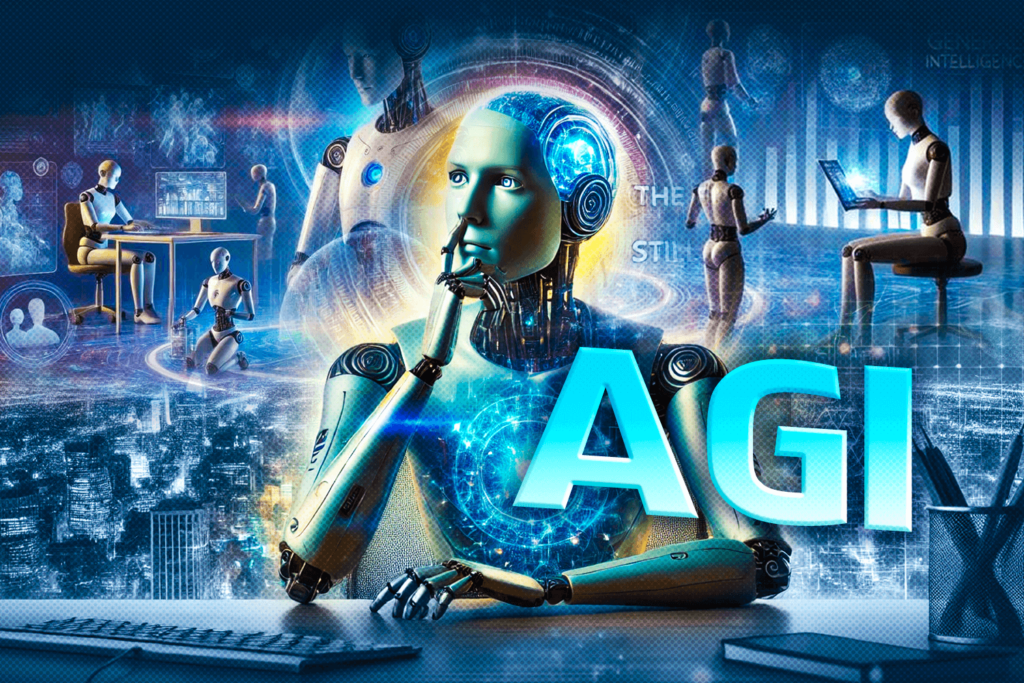
Most current AI systems are designed to solve a specific task, such as facial recognition or weather forecasting. This raises the question: Is it possible to create a general-purpose AI with the ability to perform any intellectual task that a human being can? That is the goal of artificial general intelligence (AGI).
What is AGI?
AGI (Artificial General Intelligence) is a concept in the field of artificial intelligence that describes an AI system with the ability to understand, learn, and perform any intellectual task that a human being can.
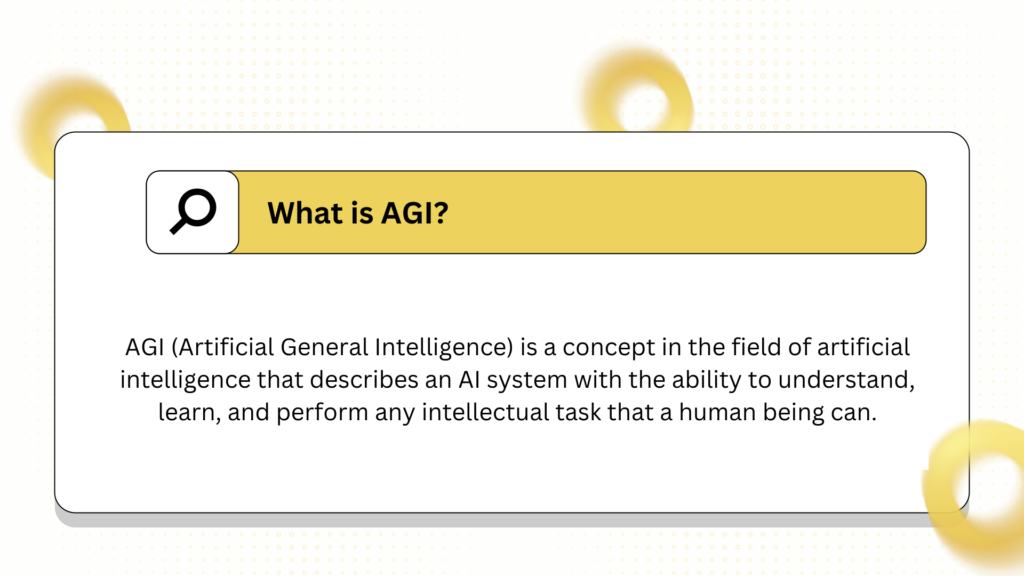
The History of AGI Development
The journey of AGI development began in the 1950s when Alan Turing – the father of computer science and artificial intelligence – proposed the Turing test. This test was designed to determine whether machines could “think.”
This idea also inspired scientists like John McCarthy, who coined the term “artificial intelligence.” However, technological limitations at the time meant that AGI remained purely theoretical.
In the 1980s, artificial neural networks were introduced, laying the foundation for deep learning. Since then, AGI research has made significant strides. Leading companies like OpenAI and DeepMind have invested billions of dollars in developing this technology.
Specifically, Microsoft has invested over $13 billion in OpenAI, while OpenAI has raised $6.6 billion from major investors like NVIDIA and SoftBank. Anthropic – a company focused on AGI development – raised over $580 million in a Series B round (April 2022) with participation from Sam Bankman-Fried and Alameda Research.
These investments reflect the expectation that AGI could revolutionize the way we live and work in the future, and demonstrate strong interest from major investors in this innovative technology.
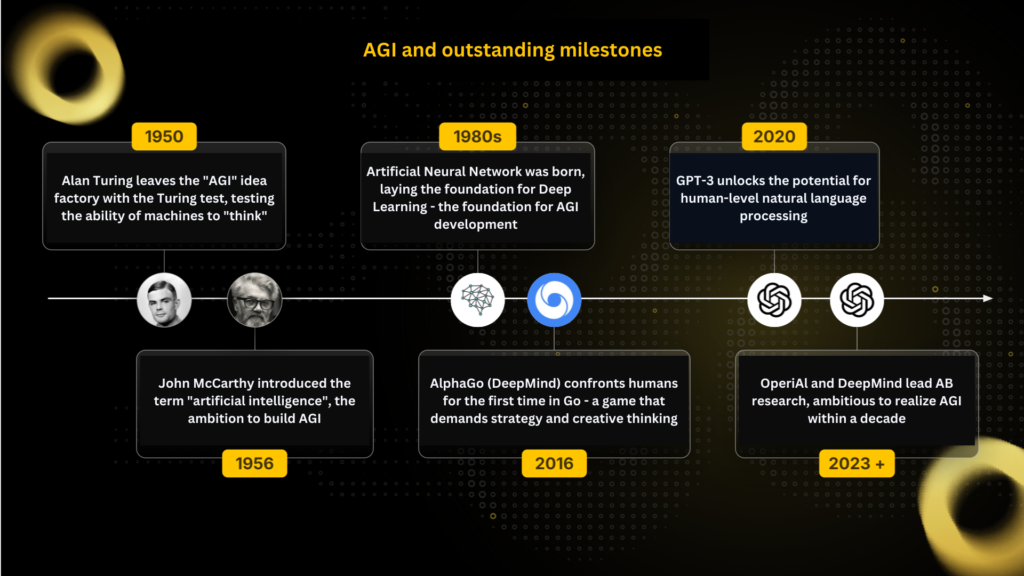
How is AGI different from current AI?
Currently, most AI systems we use fall under the category of narrow AI (ANI – Artificial Narrow Intelligence). These are systems programmed to perform specific tasks, such as ChatGPT processing natural language or Deep Blue playing chess.
However, these systems cannot yet transfer skills or apply knowledge from one domain to another. In other words, ANI only operates within the limits it was designed for and has not reached the ability to reason and solve problems comprehensively like humans.
In contrast, AGI is defined as a general-purpose artificial intelligence with the ability to learn and apply knowledge from various fields. The ability to be creative, adapt, and think like humans makes AGI a tool that can solve complex problems, from scientific research to global challenges like climate change or pandemics.
| Feature | Narrow AI (ANI) | General AI (AGI) |
| Operational Capability | Excels at one specific task; cannot independently switch domains | Multi-task capable; applies knowledge across different domains |
| Learning and Adaptation | Reliant on pre-programmed data; limited or no self-learning from new data | Self-learns from new data; adapts to unforeseen situations not pre-programmed |
| Potential Applications | Performs specific tasks like weather prediction, facial recognition | Solves complex problems requiring human-like thinking |
How AGI is Changing the Way We Work and Live
The distinction of AGI lies not only in its ability to perform complex tasks but also in its capacity to learn from multiple domains and transfer knowledge to devise novel solutions.
For example, AGI can learn to play chess to understand strategy, then apply this thinking to develop business strategies, helping to solve problems that humans often take a long time to process.
But the impact of AGI doesn’t stop there; it also has the potential to drive breakthroughs in other fields.
- Biology
AGI has the potential to surpass the limitations of current AI, especially in tasks requiring abstract thinking. A prime example is the AlphaFold project by Google DeepMind, considered a historic milestone in biology.
This AI system has simulated and predicted protein structures with high accuracy, a task once deemed “impossible” for decades. This achievement not only supports breakthroughs in drug discovery and development but also unlocks immense potential for modern medicine and biology.
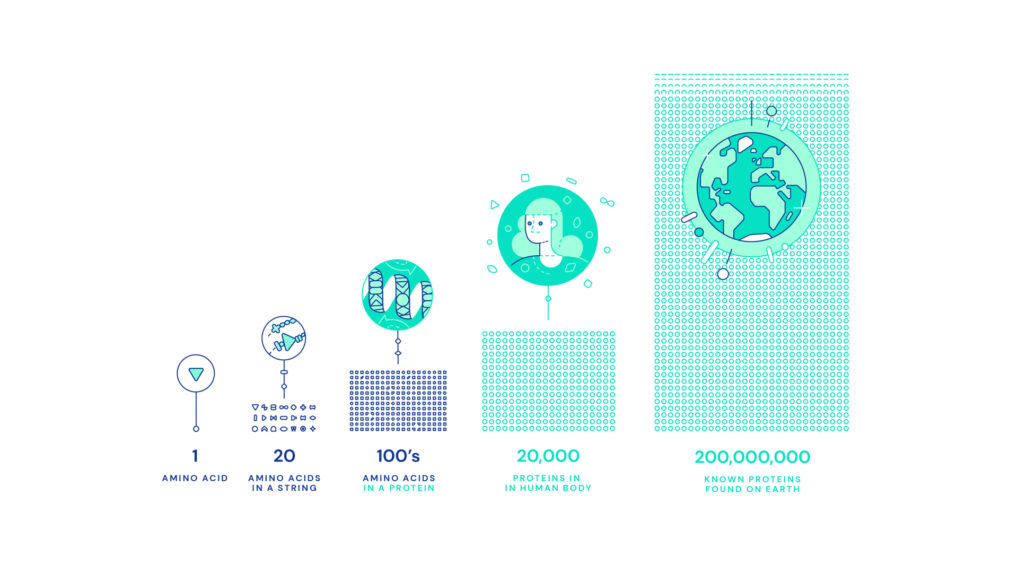
AlphaFold Protein Structure Database, containing over 200 million protein structures – covering almost all proteins known to science.
- Healthcare and Medicine
Healthcare is one of the fields where AGI has the potential to create major breakthroughs. Not only can it assist in early disease diagnosis, but AGI also has the ability to develop optimal treatment plans tailored to individual cases.
Moreover, with its capacity to process vast amounts of data, AGI can significantly shorten the time required for research and development of new drugs, and even propose specialized treatment therapies – something previously only seen in science fiction movies.
This capability is not only transforming the global healthcare industry but is also evidenced by impressive growth forecasts for the AI and AGI healthcare market. According to a report from Mspoweruser, the AI in healthcare market will reach nearly $188 billion by 2030, with an annual growth rate of 37%.
On a larger scale, AGI is rapidly expanding its role. According to a report from SNS Insider, the AGI market was valued at $3.01 billion in 2023 and is expected to grow at a CAGR (compound annual growth rate) of 37.5%, reaching $52 billion by 2032.
These figures not only reflect the high expectations for AGI but also demonstrate that the future with the support of artificial superintelligence is limitless.
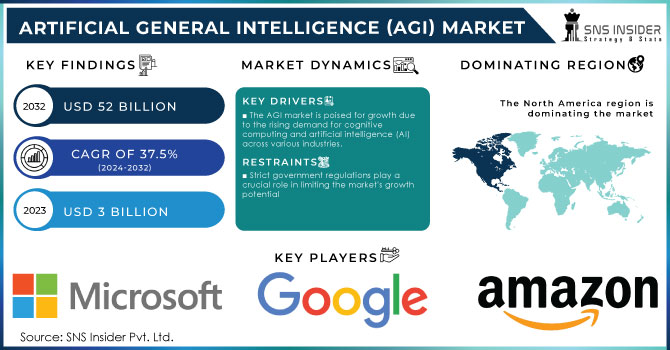
Beyond healthcare and biology, AGI is also showing the potential to revolutionize other fields, especially blockchain.
AGI x Blockchain: A Breakthrough in the Decentralized Era
The intersection of two groundbreaking technologies – AGI and Blockchain – not only redefines how we manage data but also unlocks a future where AI and humans collaborate on a transparent, decentralized platform.
One of the challenges for AGI is ensuring transparency and decentralization in its deployment and governance. Blockchain, with its ability to store data securely and in a decentralized manner, has become the ideal solution to this problem. Blockchain technology not only supports information storage but also plays a vital role in deploying AI-based dApps and DAOs.
SingularityNET, an organization based in Switzerland, is a prime example of efforts to develop decentralized AGI. This system allows the community to control and access AGI technologies instead of being dominated by large corporations. This not only protects the interests of users but also minimizes the risk of technology monopolies – one of the major concerns in the AI field today.
In the realm of digital assets, Alethea AI has made a breakthrough by combining AGI and blockchain to develop intelligent NFTs (iNFTs). These digital assets not only hold collectible value but also interact and respond like humans.
Notably, in 2021, an iNFT was auctioned at Sotheby’s for nearly half a million USD. This success demonstrates the potential of AGI in pushing the boundaries of creativity, especially in building intelligent metaverses where users can directly interact with AI characters in real-time.
Furthermore, the Open AGI Summit held in Bangkok on November 13, 2024, provided a crucial platform to explore the intersection of AGI and blockchain. Supported by industry giants such as Google Cloud, Polygon Labs, and Sentient, the event brought together leading experts including Pramod Viswanath (co-founder of Sentient), Sandeep Nailwal (founder of Polygon), and Illia Polosukhin (co-founder of Near).
The summit focused on topics such as AI research, decentralized governance, and ethical AI development to address concerns about AGI control. It also emphasized the importance of building transparent and decentralized governance models to ensure that AGI development benefits society.
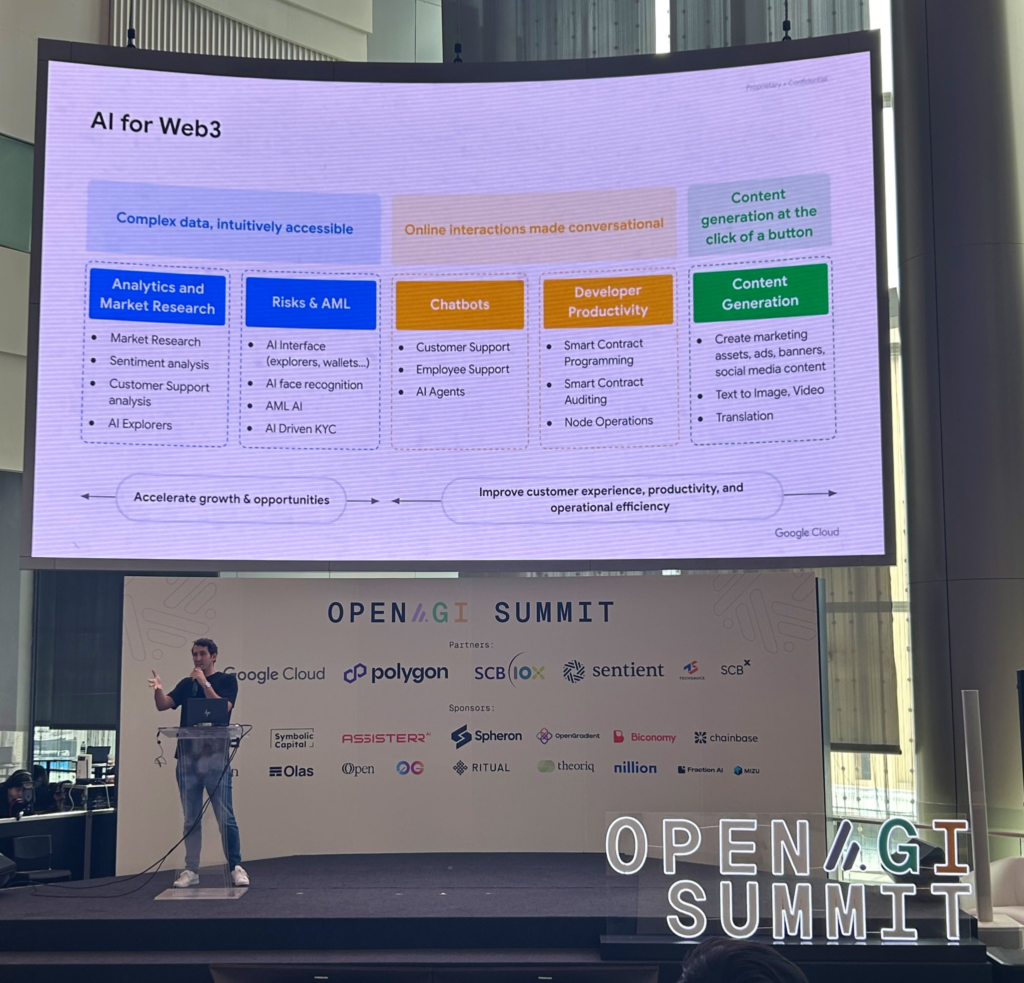
Beyond theory, the Open AGI Summit also fostered practical research through the AGI-Thon competition, where teams tested and evaluated AGI systems using the game “Werewolf” (also known as “Mafia”). This provided not only an opportunity to assess the capabilities of AGI but also encouraged researchers to drive innovation in the field.
It’s clear that the combination of AGI and blockchain not only creates a technological turning point but also opens up opportunities for closer collaboration between humans and machines. From improving healthcare to managing digital assets and developing blockchain applications, AGI is shaping how we live and work in the future.
However, to realize this potential, strategic investment and appropriate regulatory frameworks are needed to ensure that this technology truly benefits society as a whole.
Ethics and the Future of AGI
While AGI is expected to usher in a new technological era and bring tremendous benefits to many fields, its development also raises controversial questions about ethics and control.
One of the biggest concerns is whether AGI should be given autonomy. If machines reach a level of intelligence similar to humans, we will face questions about AI consciousness and rights.
Known as the “Godfather of AI,” Geoffrey Hinton expressed concerns about the rapid development of artificial intelligence and its potential risks in an interview with the BBC. He suggested that AI could soon surpass human capabilities and become difficult to control.
Artificial intelligence needs to be given special attention. It’s like a double-edged sword: capable of accomplishing almost anything, but lacking consciousness.
Furthermore, the issue of control and ownership of AGI is also a source of debate. Who will control AGI systems? If only a few organizations or countries possess AGI, the risk of abusing the technology to consolidate power and cause social injustice is a real possibility.
DeepMind co-founder Shane Legg also emphasized that “We need to think carefully about the potential consequences of creating an entity with intelligence equal to or surpassing that of humans.”
Finally, experts are also concerned about the safety and transparency of AGI development. An overly powerful AI system lacking oversight mechanisms could make wrong decisions or be used for malicious purposes.
As Elon Musk once shared at the “Atreju” conference in Rome: “Artificial intelligence needs to be given special attention. It’s like a double-edged sword: capable of accomplishing almost anything, but lacking consciousness.”
These controversies surrounding AGI highlight that, for this technology to truly benefit society, developers, governments, and the international community need to collaborate to establish ethical guidelines and appropriate control mechanisms to minimize potential risks.
Will AGI and blockchain be able to shape a more equitable and transparent future? The answer depends on how we deploy and utilize these technologies in this new era.
Read more: Reinforcement Learning – An Important Pillar in AI and Crypto.

